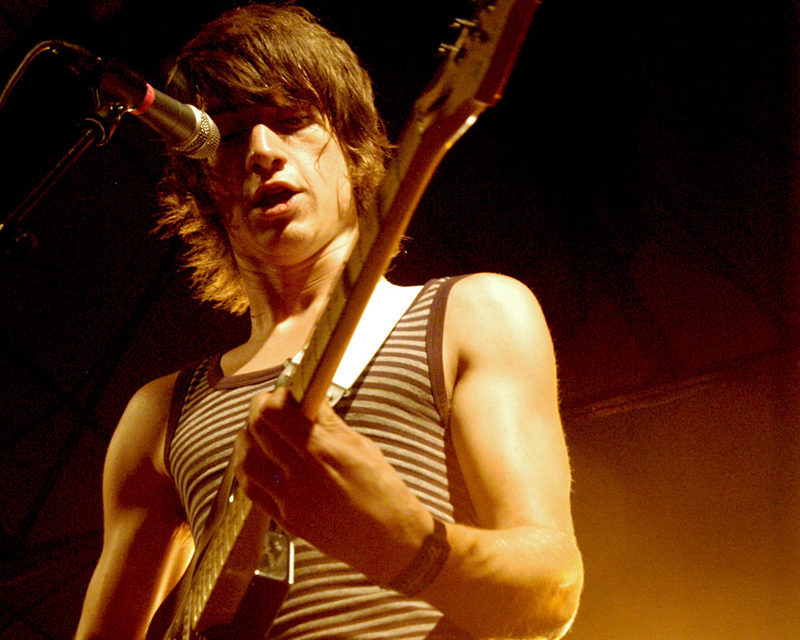The year was 2006, and a little British boy band had just released its debut album. Upon first impression, it seemed Whatever People Say I Am, That’s What I’m Not would be just another bundle of songs about teen angst.
But when this album became the fastest-selling debut album in British music history, it became clear that this band would prove to be much more than a superficial group of naïve teenagers.
The Arctic Monkeys defied the odds and went on to release three more top-charting albums consecutively.
But the Arctic Monkeys of today are definitely not the same group of scrawny teens who made it big in the previous decade.
This band has evolved tremendously since their years as a young, wide-eyed, sneaker-wearing garage band. Now they wear expensive leather jackets, gel their hair down and rock to a completely different sound.
This new vibe we hear throughout their recently-released fifth studio album, AM, has a crisp, hot and eclectic feel to say the least. Since their first album, the Arctic Monkeys have grown together and gathered inspiration, which they seem to have poured out and mixed together to create their newest album. There are traces of a little bit of everything, from OutKast and Dr. Dre to John Lennon and Black Sabbath, making it easy to understand why the band has dubbed this as the album they’ve always wanted to make.
This inspiration trickles throughout in many different ways. As lead singer Alex Turner admitted to British magazine NME, even the title AM was ripped off the Velvet Underground’s 1985 album, VU. In order to reconcile all their inspirations, the Arctic Monkeys wrote much of the album far away from Sheffield in the wilderness of Joshua Tree National Park.
They recorded the album only a few blocks away from the world-renowned Amoeba Music record store in a little town called Los Angeles.
The creation of this young, heterogeneous record began about a year ago when the group spontaneously released the upbeat, falsetto-happy single, “R U Mine?” which set the tone for the remainder of the album. This track is the band’s first experimentation with some harder, Ozzy Osbourne, metal-type rock. The next track the band dropped was the similarly confident and sexy “Do I Wanna Know?” (or “DIWK” as fans call it), which ends in an electric guitar strum that flows easily into “R U Mine?”
That track opens with a harsh strum similar to the one before it.
In both of these tracks, Turner’s voice is much lower, more mysterious, stark and more sophisticated than anything he’s done before. This new, intense sound is the sensation the band wants us to feel, and thus these two tracks in conjunction with one another make a perfect opening to the LP.
A few songs later we come across another acronym-provoking track entitled “Why’d You Only Call Me When You’re High?” This song fits right into the album with yet another foot-tapping beat, this time reminiscent of “Still D.R.E” by the doctor himself.
This is one of those tracks that when plugged into headphones would make any average Joe feel like a bad-to-the-bone biker.
The band slyly laced this song into the record via its music video, in which “Do I Wanna Know” is playing in a street corner bar that Turner finds himself in when under the influence of some mind-altering substances.
Right now, the four monkeys are all high riding on cloud nine at a fast pace, and they don’t seem to be slowing down any time soon.
The titles of the aforementioned tracks and many of the others on the album, which portray blunt questions and bold statements, perfectly encompass the current state of this band.
They’re poised, unabashed and a little bit sassy, but for a totally good reason. This album has once again become number one on the UK Albums Chart and is currently the second fastest-selling album of the year, just behind Daft Punk’s Random Access Memories.
I’m not sure if anyone knows where this band is headed next, but all we know is they’re back in action, sexier than ever and ready to grace hundreds of Emory students with their presence at Music Midtown this upcoming weekend.
– By Alana Pockros
The Emory Wheel was founded in 1919 and is currently the only independent, student-run newspaper of Emory University. The Wheel publishes weekly on Wednesdays during the academic year, except during University holidays and scheduled publication intermissions.
The Wheel is financially and editorially independent from the University. All of its content is generated by the Wheel’s more than 100 student staff members and contributing writers, and its printing costs are covered by profits from self-generated advertising sales.






